The Camry follows Toyota’s tradition of using words that mean crown as names for its cars. It is derived from the Japanese word “kanmuri,” which means “crown,” and it’s more than fitting for a vehicle that has reigned as the best-selling sedan in the US market for years.
It’s certainly no easy feat, given how competitive the market is for passenger cars, and yet the Toyota Camry has held that royal title for more than 20 consecutive years. Toyota has released seven generations of the Camry over the past four decades, but which year models stand out among its royal ranks?
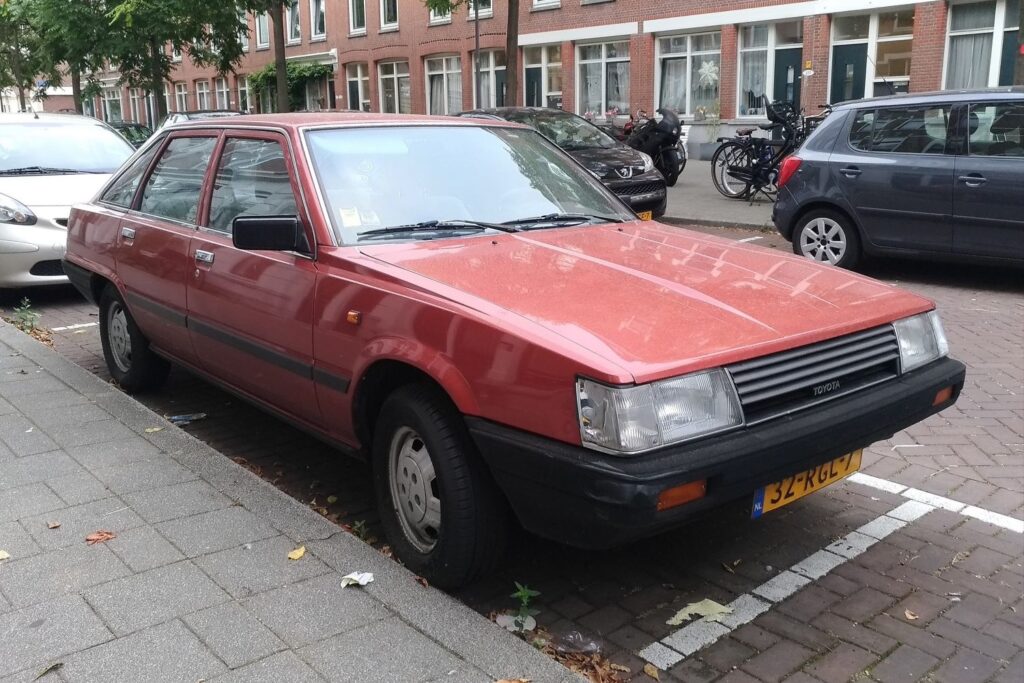
1983 Toyota Camry – The Very First Camry
Following the overwhelming success of the Corona, Toyota released the very first Camry to compete against other compact cars in the market. This first-generation Camry was true to its early ‘80s roots: it had straight-edge bodywork with a flush-fitted trim and window pillars.
What’s most impressive about this 1983 sedan is its EPA interior volume of 107 cubic feet. This is 15% more space than the Corona and 10% more space than the Cressida, Toyota’s flagship luxury model at the time.
The 1983 Camry wasn’t Toyota’s first foray into the front-wheel drive (FWD) party, but it was the first time it got it right. Its 118 cubic inch inline-four engine was mounted transversely, with the transaxle tucked directly behind it.
While the Camry could stand to improve its speed, it held its own pretty well among its competitors. It offered a simple yet comfortable ride with Toyota’s reliable brand, which was more than enough for many.
- Engine Specs: 111.8 cu-in inline 4 engine
- Power: 89 hp at 5,200 RPM
- Torque: 104 lb-ft at 3,400 RPM
- Top Speed: 109 Mph
- Fuel Consumption: City 31 miles per gallon (mpg)/ Highway 43 mpg
- EPA Interior Volume: 107 cu ft
- Cargo Volume: 13.6 cu ft. or 385 L
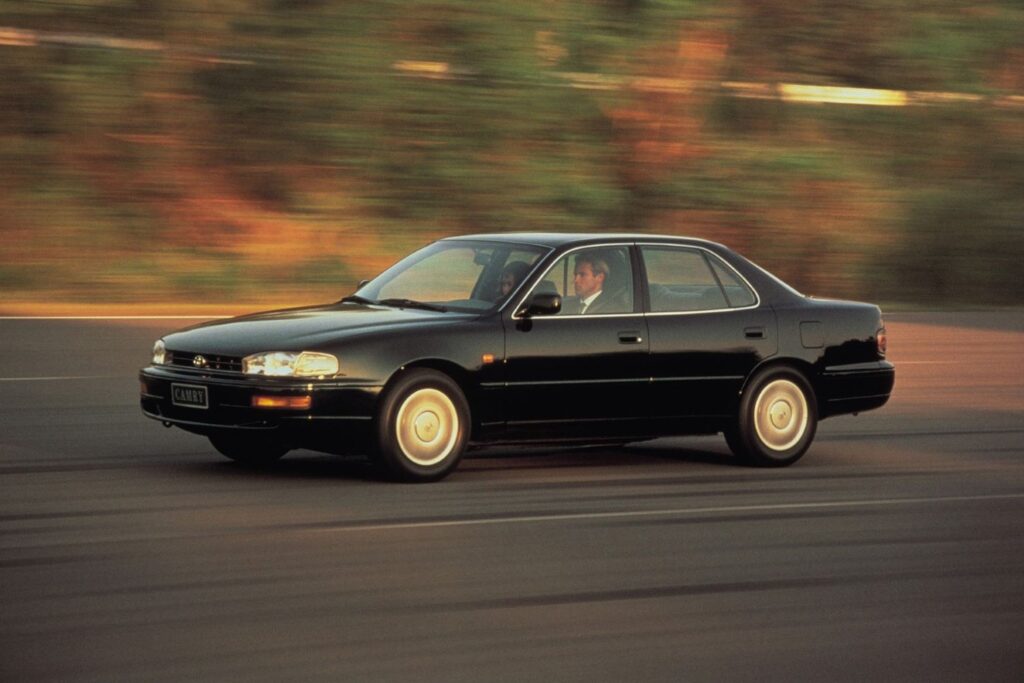
1992 Toyota Camry – From Compact to Midsize
In 1992, Toyota surprised buyers and fellow manufacturers alike with a completely different look for the third-generation Camry. The redesign featured a bigger and better body with a stylish, rounded look and a new grille. It’s around six inches longer and two inches wider than the previous model, which meant it also boasted a bigger interior space measuring 112.1 cubic feet.
No longer small enough to fall under the compact class, the 1992 Camry was then classified as a midsize sedan. However, the upgrades weren’t purely cosmetic. Under the hood, it also came with two new engine options: a 2.2-liter four-cylinder engine and a 3.0-liter V6.
The 1992 Camry also featured a better air conditioning (A/C) system and upgraded insulation that reduced road noise.
- Engine Specs: V6, 3.0 L
- Power: 185 hp
- Torque: 195 lb-ft
- Fuel Consumption: City 16 mpg/ Highway 23 mpg/ Combined 19 mpg
- EPA Total Interior: 112.1 cu ft
- Cargo Volume: 14.90 cu ft or 422 L

2007 Toyota Camry – Bigger and Better
The Camry got bigger and better over the years. The 2007 model featured a sportier and more blunt nose with an angular body. It came in several trim levels and a hybrid model that packed a gas engine and electric motor under the hood.
To the surprise of no one, the 2007 Camry sold over 470,000 units in its first year. Advanced safety features such as four-wheel disc brakes, an anti-lock braking system (ABS), and brake assist (BA) appealed to buyers. If these weren’t enough to convince you to buy a 2007 Camry, then the standard dual-stage frontal air bags, side curtain-type air bags, and a driver’s knee air bag ought to do the trick.
A more powerful 3.5-liter V-6 engine option was also available for those who wanted more speed. Put to the test, this new engine could easily produce a whopping 268 hp, making it one of the fastest midsize sedans on the market.
- Engine Specs: 2.4 Liter four-cylinder engine
- Power: 158 hp at 6,000 RPM
- Torque: 161 lb-ft at 6,000 RPM
- Fuel Consumption: City 21 mpg/ Highway 30 mpg / Combined 24 mpg
- EPA Total Interior: 116.4 cu ft
- Cargo Volume: 15 cu ft

2017 Toyota Camry Hybrid – The Top-ranking Hybrid
The seventh generation Camry ushered in a new design, a standard automatic transmission, and Toyota’s new Entune infotainment system. Unfortunately, there wasn’t as much fanfare as previous generations, and critiques against the 2012 model began pouring in. Thankfully, it wasn’t long before the 2017 Camry Hybrid swept in and saved the day.
Ranked by US News as the #1 Hybrid Car of 2017, this midsize sedan came with a Hybrid Synergy Drive system that combined a 2.5L four-cylinder engine with an electric motor and battery pack.
The 2017 Camry Hybrid also featured a spacious cabin that can comfortably seat five passengers with ample legroom. There’s also plenty of space in the trunk.
Aside from several standard features like dual-zone automatic climate control and a Smart Key System, Toyota further sweetened the deal with impressive safety systems. Each trim level came with the Star Safety System, which included features like ABS, BA, and more.
- Engine Specs: 2.5 Liter four-cylinder engine and electric motor
- Power: 200 hp at 5,700 RPM
- Torque: 156 lb-ft at 4,500 RPM
- Fuel Consumption: City 42 mpg / Highway 38 mpg
- Passenger Volume: 102.7 cu ft
- Cargo Volume: 13.1 cu ft
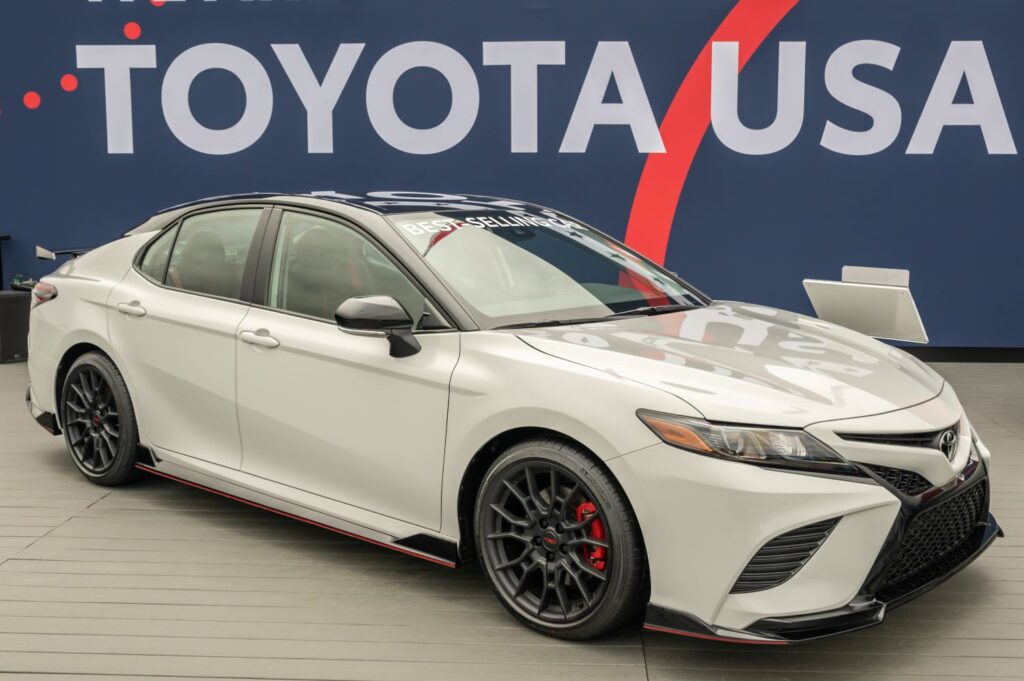
2021 Toyota Camry TRD – The NASCAR Star
For the first time, the TRD Camry nameplate graced the tracks of NASCAR’s highest division: the NASCAR Cup Series (NCS). It might be hard to believe for some since the Camry is more well-known for its spacious interior and reliable engine than for its performance. Toyota and the Toyota Racing Development (TRD) team changed the game by releasing the fast and furious Camry TRD.
At first glance, you’ll immediately notice the 2021 Toyota Camry TRD’s redesign. The discrete rear spoiler, prominent exhaust tips, and sleek 18-inch rims all come together to give the sedan a sportier vibe. Under the hood, it boasts an impressive 3.5-liter V-6 engine mated to an eight-speed automatic transmission.
You get the best of both worlds with not just a sleek exterior but an impressive interior too. The cabin comes with quality leather seats, red contrast stitching, and stylish red seat belts. The 2021 Camry also features all the best high-tech systems, like a new floating touchscreen, a premium sound system, a rear cross-traffic alert, and more.
- Engine Specs: V6, 3.5 Liters
- Power: 301 hp at 6,600 RPM
- Torque: 267 lb-ft at 4,700 RPM
- Fuel Consumption: City 22 mpg / Highway 31 mpg
- Cargo Volume: 15.1 cu ft
- EPA Interior Volume: 115.5 cu ft

With its spacious cabin, advanced safety features, and Toyota’s legendary reliability, the Camry has proven itself time and time again to consumers. As the Camry enters its ninth generation with the 2025 model, Toyota fans can look forward to how it’ll carry on its royal nameplate.
Any information provided on this Website is for informational purposes only and is not intended to replace consultation with a professional mechanic. The accuracy and timeliness of the information may change from the time of publication.


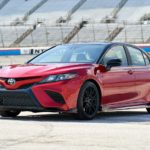
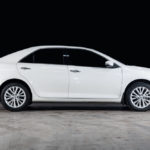


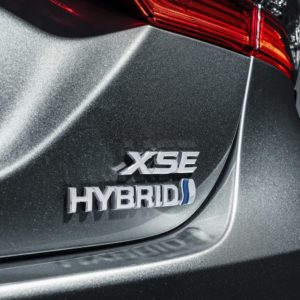
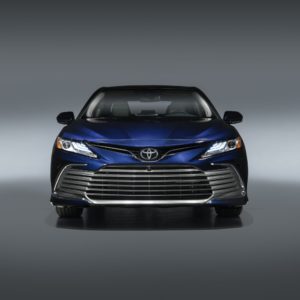










The 2007 4 cylinder 2AZ FE should be avoided because the redesigned piston rings from 2007-2009 caused severe oil consumption. It was a big enough problem that Toyota issued a campaign to rebuild the pistons for those years. Only buy the 4 cylinder if you have proof that Toyota did the rebuild.